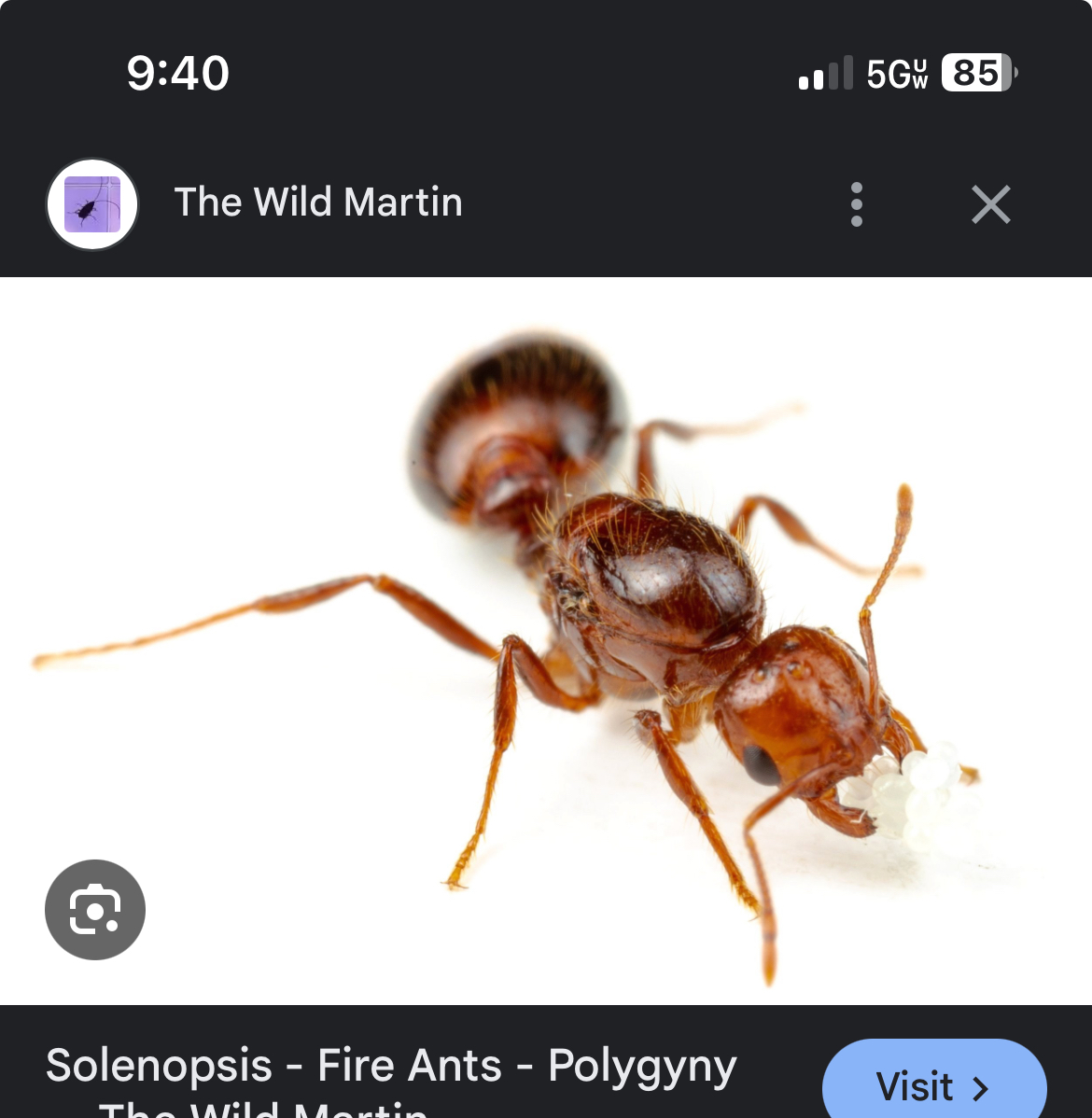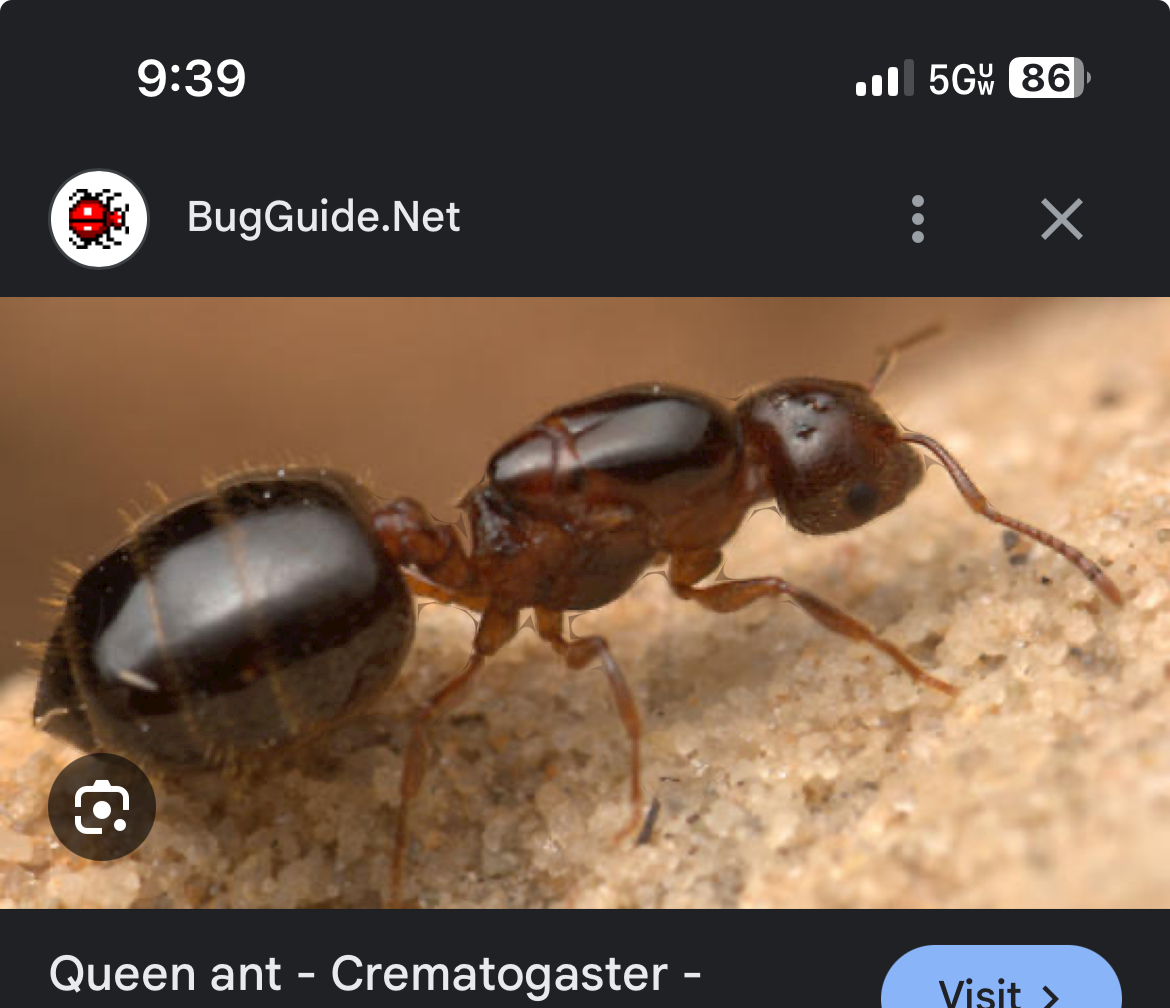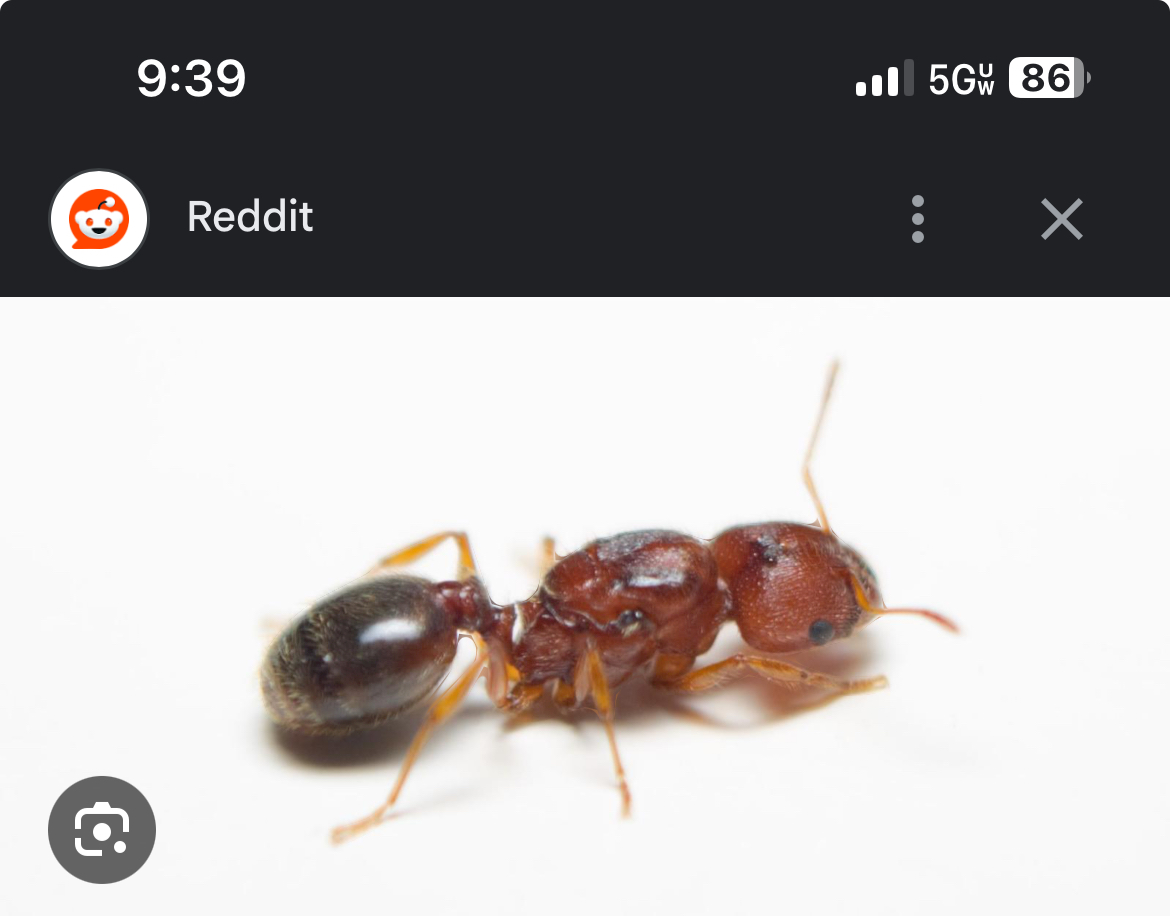Do note this guide is only made to make quick distinguishes, but a closer look will be needed for better identification.
Solenopsis queens have a head and torso which is a reddish color which varies in shade. The shade of red will be mostly consistent across their entire head and thorax. The gaster is black, full black for S.
invicta, and some geminata variants, but species as S. richteri may have red hints on their gaster.
(Edit): This guide is only for the Solenopsis groups you may call “fire ants” such as S. invicta
, richteri, geminata, xyloni, and others.
Pheidole queens resemble Solenopsis queeens, but usually have a much wider head than the average Solenopsis queen, and may have bulkier mandibles and bodies in general.
Crematogaster queens are very similar to Solenopsis, but their gaster almost always tapers to a point, while Solenopsis queens have round gasters.
Reference pictures. Pictures, in order, are (Solenopsis, likely invicta, Crematogaster, and Pheidole.)
Edited by The_Gaming-gate, July 22 2024 - 5:09 AM.

















